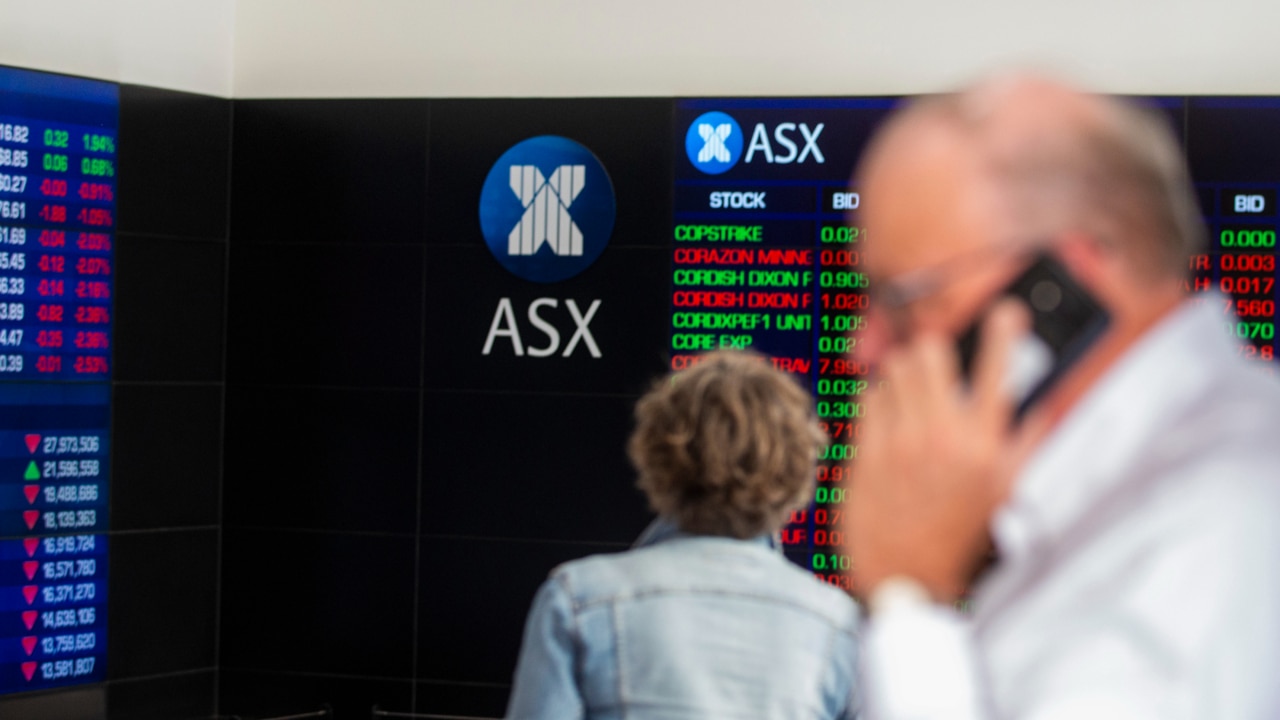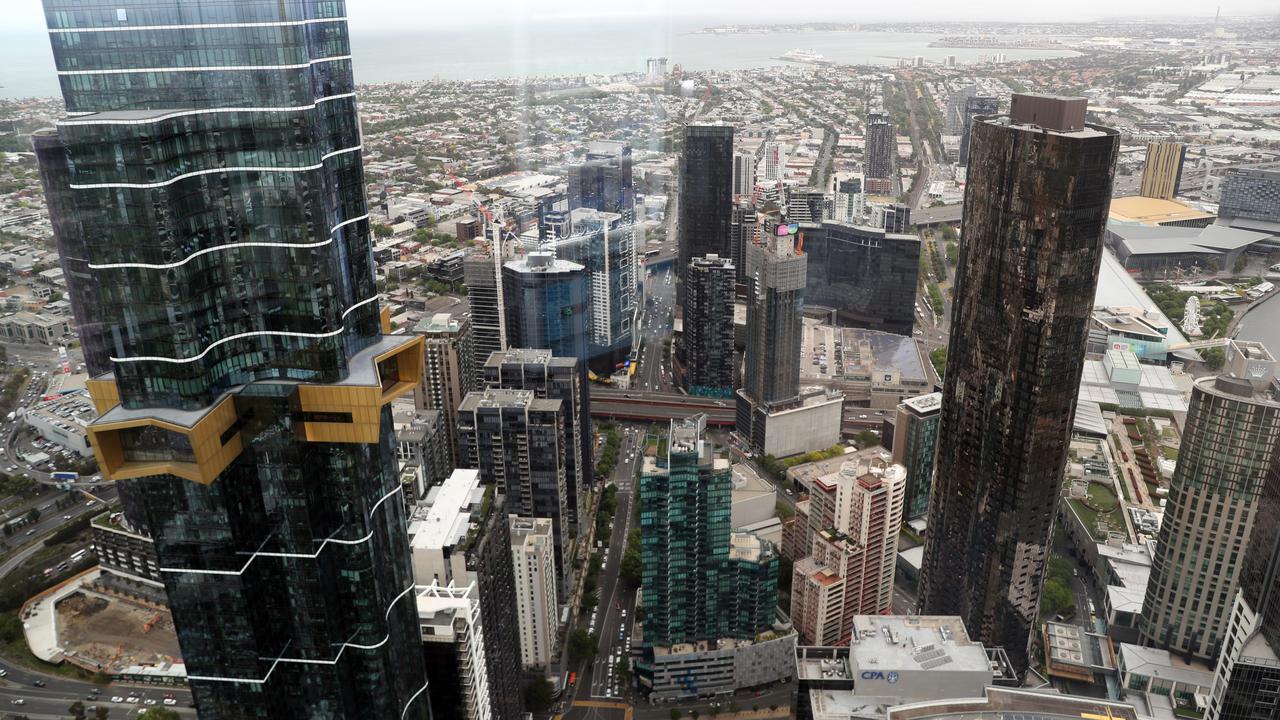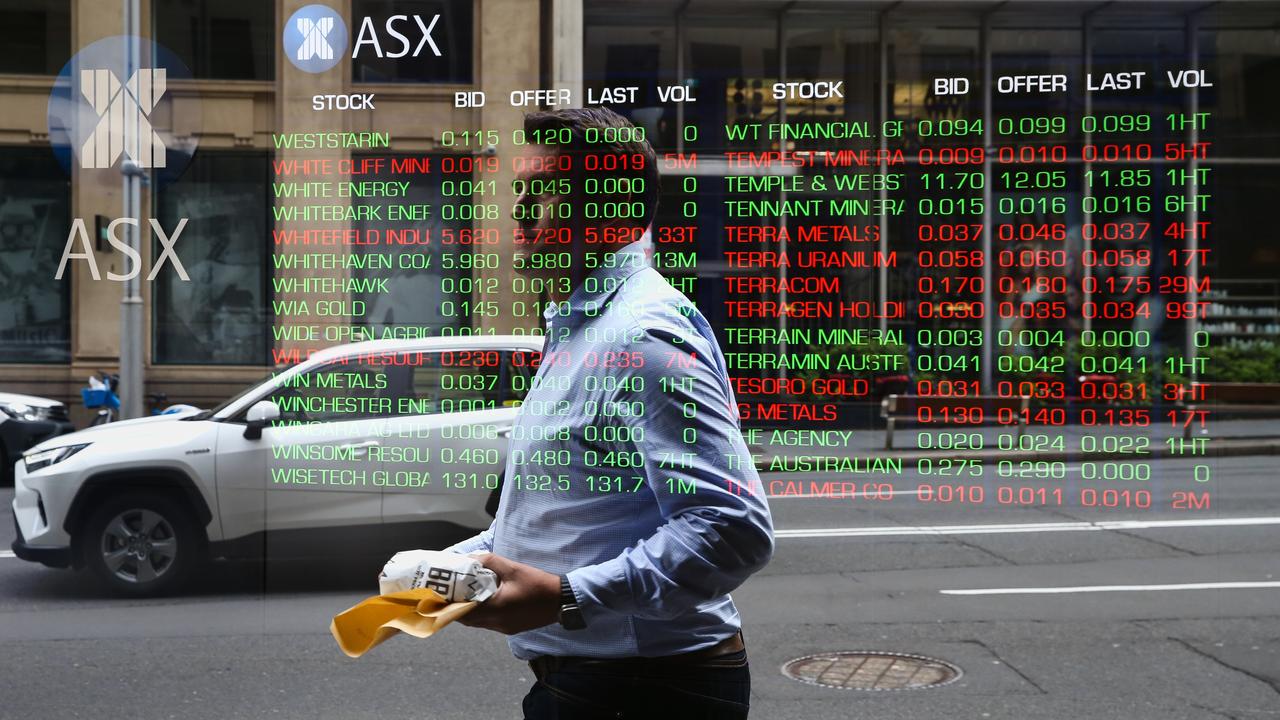Citi sees little upside to market valuations in US
Analysts are questioning the sustainability of strong gains in sharemarkets as slowing economic growth undermines the earnings outlook.

Analysts are questioning the sustainability of strong gains on sharemarkets as slowing economic growth undermines the earnings outlook, even as cooling inflation lessens interest rate risk.
After a shaky start to the year, Australia’s S&P/ASX 200 has jumped 5 per cent in two weeks.
China’s reopening from Covid-19 restrictions has boosted commodity prices, adding to positive leads from the US, where easing inflation pressure has fuelled expectations of smaller US rate hikes.
But after surging 65 per cent rise since early October, Singapore iron ore futures fell as much as 5.4 per cent to $US118.75 a tonne on Monday after China’s powerful National Development and Reform Commission announced a fresh crackdown on iron ore market manipulation.
After rising 4.2 per cent in the first two weeks of the year, the US S&P 500 is trading on a trailing 12-month price-to-earnings valuation of more than 18 times, leading Citi to warn on valuation.
“Based on our fair value framework, valuations much above current levels are unsustainable unless there is a significant change in the macro backdrop,” says Citi’s chief US equity strategist, Scott Chronert. With the S&P 500 near 4000 points, its trailing PE ratio rose to 18.2 times, “dangerously close” to the upper end of Citi’s fair value.
“We suspect valuation could put a near-term cap on upside momentum, even as positioning normalises. Macro variables like falling rates, decelerating inflation, and resilient economic growth could push our fair value range higher, but we suspect markets will remain in a new, lower valuation regime,” Chronert says.
Still, with downward revisions to 2023 earnings estimates widely expected by fund managers and macro strategists alike, US corporate earnings could be “more resilient than feared”.
And while most strategists have been warning that a downward “reset” of consensus estimates for December quarter earnings could be a risk, “we have to acknowledge that this could be viewed as a clearing event if interest rate sentiment turns less hawkish”, Chronert says.
Citi’s Levkovich Index has rebounded slightly from the “panic levels” that were seen in late 2022, while CFTC equity futures show net positioning as a percentage of gross exposure was rebounding from decade lows for asset managers and leveraged funds.
“This helps explain the recent rally,” Chronert says.

Of course, much depends on how expectations for earnings and interest rates evolve.
Many strategists see a weak first half of the year for shares, followed by a strong second half.
But Citi doesn’t see the same downside pressure on earnings as recession hits in the first half, or the same degree of upside lift from valuations as interest rates fall in the second half – assuming the consensus is correct. Thus, while Citi’s year-end target of 4000 lies below the median strategist expectation, its aggregate earnings per share target of $US216 is above peers.
“Said differently, we expect a market multiple (trailing PE ratio) closer to 18 times at year-end versus others around 20 times,” Chronert says.
“Essentially, we are suggesting that we are entering a new, lower valuation regime for the S&P 500 versus what we have experienced since the global financial crisis.
“This implies index gains in this new environment will need to be ‘earned’ vis-a-vis near and medium-term fundamental improvement, less so from macro tailwinds behind multiple rerating triggered by lower rates.”
MST Financial senior analyst Hasan Tevfik said last week that Australia’s S&P/ASX 200 was trading on PE of 14 times – since then it has risen to 14.5 times.
“This is marginally higher than levels three months ago but considerably lower than 18 times it traded on this time last year,” Tevfik says. “Every market in our universe, except Korea and emerging Europe, has endured a derating in 2022.”
But with investors expecting a fall in profits after rate hikes, Tevfik says it could be more helpful to look at cyclically adjusted PE ratios (CAPE) – gauging prices as a multiple of historic EPS for the average of a typical business cycle – as an indication of valuation.
While the Nasdaq now trades on a CAPE more than 10 per cent below its long-term average, the broader S&P 500 trades on a CAPE of more than 30 times which “remains a hefty premium” to its long-term history.
Australia’s ASX 200 trades on a CAPE of about 20.7 times, not far from its long-term average. During previous profit recessions the market’s CAPE has typically bottomed out at around 15 times. If the CAPE were to fall to 15 times, the ASX 200 would fall 27.5 per cent from the current level.
To be clear, no one is saying the market is about to fall 27.5 per cent. But the exercise demonstrates the point that the bourse may not be as cheap as it looks.
Markets where Tevfik says a profits recession appears to be priced in, according to the CAPE, include Japan, China, emerging Europe, Singapore, Hong Kong and, Korea. They could be better hunting grounds.
So with global bond yields likely to keep falling according to MST’s outlook, Tevfik sees “little capital gain on offer” in shares. Perhaps owning some bonds and yield stocks is the way to go.
Tevfik says the time is right for investors to focus more on higher dividend yield stocks. On that score, he finds the highest dividend yields are in the emerging markets of Latin America and emerging Europe.
Among developed markets, Singapore and Australia have the highest dividend yields on offer, at 4.8 per cent and 4.4 per cent respectively, albeit Singapore is experiencing stronger upward revisions in consensus estimates for dividends per share.
“Only these four equity markets have a dividend yield higher than the US 2-year bond yield and where global income investors will be focusing, we believe,” says Tevfik.






